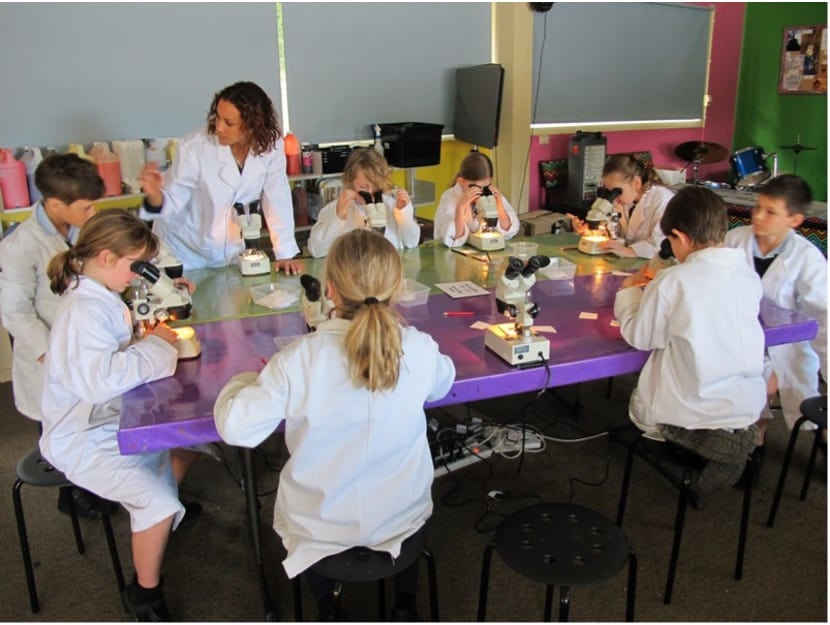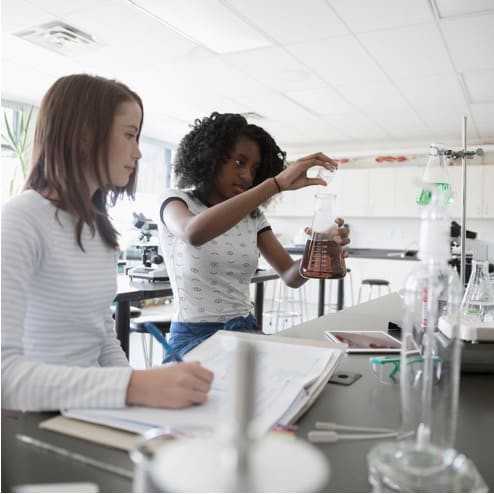In this form of scientific experiment, at least two groups are used. Each group is made up of subjects who are as similar as feasible in terms of age, gender, and other factors. Humans, animals, and the environment are all possible subjects. The subjects are assigned to one of two groups, as the name implies. The following description will utilize two groups for clarity, but experiments can have more than two groups. Complete randomization can be accomplished in a variety of ways. You can, for example, use a random number generator that you can find for free on the internet. After you’ve gotten your results, put every other number in the column in the control group. The remainder will be placed in the experimental group.
The dependent variable is the experiment’s major focus; it is what is being investigated in the experiment. In such experiments, this dependent variable is observed to see how it is affected by changes in the independent variable, which is deliberately manipulated in the experimental group. The control group, however, remains unchanged in terms of the independent variable, providing a baseline against which the experimental outcomes can be compared.
At the conclusion of the experiment, researchers closely examine the outcomes between the experimental and control groups. They look for any significant differences in the dependent variable that arise as a result of manipulating the independent variable. If a noteworthy difference is found, it is reported as evidence of a cause-and-effect relationship. This thorough analysis helps in confirming whether the changes in the independent variable have directly influenced the dependent variable, thereby providing valuable insights into the dynamics under study.
The three main types of scientific experiments are experimental, quasi-experimental, and observational (non-experimental).
Experimental, or randomized control, is the highest level of scientific experimentation. As the name indicates, there is the greatest amount of control. In this form of scientific experiment, at least two groups are used. Each group is made up of subjects who are as similar as feasible in terms of age, gender, and other factors. Humans, animals, and the environment are all possible subjects. The subjects are assigned to one of two groups, as the name implies. The following description will utilize two groups for clarity, but experiments can have more than two groups.
Complete randomization can be accomplished in a variety of ways. You can, for example, use a random number generator that you can find for free on the internet. After you’ve gotten your results, put every other number in the column in the control group. The remainder will be placed in the experimental group [1].
The dependent variable is the experiment’s major focus; it is what is being investigated in the experiment. The independent variable is what has changed in the experiment. This is known as manipulation of the independent variable because it is only modified in the experimental group. The independent variable foes not change in the control group.

Quasi-experimental is the second type of scientific experiment. Its goal is to prove that an independent and dependent variable have a cause-and-effect connection. A quasi-experiment, unlike a true experiment, does not rely on random assignment. Subjects are instead divided into groups depending on non-random factors. In circumstances where true experiments are not possible due to ethical or practical considerations, quasi-experimental design is a useful technique.
For example: You learn that a number of the clinic’s psychotherapists have chosen to try out the new therapy, while others who serve comparable patients have chosen to continue with the old one. These pre-existing groups can be used to compare the symptom development of individuals who received the new therapy vs those who received the standard course of treatment. Although the groups were not assigned at random, if any systematic differences between them are correctly accounted for, you can be pretty confident that any differences must be due to the therapy and not other confounding variables [2].
Non-experimental research is study in which no independent variable is manipulated. Non-experimental researchers just measure variables as they naturally occur rather then influencing an independent variable (in the la bor real world). Non-experimental research is preffered in a variety of situations [3], including when:
- - Rather than a statistical relationship between two variables, the study question or hypothesis is focused on a single variable.
- - The research topic is about a statistical link between variables that isn’t causal.
- - The research question is about a causal link, but for practical or ethical reasons, the independent variable cannot be changed, and participants cannot be randomly assigned to conditions or orders of conditions.
- - The study question is wide and exploratory, or it asks what it’s like to go through a particular experience.

Upon reviewing the lesson on scientific experiments discussed, learners can expect to achieve several key outcomes. First, they will be able to clearly define and describe the sequence of the scientific method as it applies to conducting experiments. Additionally, learners will gain the ability to differentiate between inductive and deductive reasoning approaches within scientific processes. Finally, the lesson will enable students to identify and distinguish among the three primary types of scientific experiments, enhancing their understanding of experimental design and methodology.
In scientific experiments, both inductive and deductive methods play crucial roles but in different phases of the research process. Let's explore how these methods are applied to gain a clear understanding:
Inductive Reasoning in Science: The Starting Point
Inductive reasoning is typically used at the beginning of a scientific experiment. Researchers observe specific phenomena and gather data without initial hypotheses. From these observations, patterns begin to emerge, which facilitate the formulation of preliminary hypotheses. This process involves:
- - Collecting observational or experimental data.
- - Noticing trends or regularities within the data.
- - Formulating hypotheses based on these observed patterns.
Deductive Reasoning: Hypothesis Testing
Once a hypothesis is generated through inductive reasoning, deductive methods come into play. Deductive reasoning is used to test these hypotheses in a more structured way. This method starts with the general hypothesis and works towards specific predictions that can be tested. The steps typically involve:
- - Deriving testable predictions from the general hypothesis.
- - Designing experiments specifically to test these predictions.
- - Observing whether the experimental results support or contradict the hypotheses.
Integrating Both Methods
A successful scientific experiment often integrates both inductive and deductive reasoning. The hypothesis generation through inductive methods is incomplete without the rigorous testing facilitated by deductive methods. Conversely, deductive experiments rely on well-formulated hypotheses derived from solid inductive reasoning.
Together, these methods form a robust framework for scientific inquiry, ensuring that conclusions are well-supported by both broad observations and targeted experiments.
What is the scientific method and who developed it?
The scientific method is a systematic approach used to investigate phenomena, acquire new knowledge, or correct and integrate previous knowledge. The development of the scientific method is credited to Sir Frances Bacon, an English philosopher, statesman, scientist, and author, who formulated these principles in the early 17th century
Steps to Properly Design a Scientific Experiment
Designing a scientific experiment involves a careful and methodical approach to ensure that the findings are reliable and valid. Here’s a breakdown of the essential steps involved in crafting a proper scientific experiment:
1. Developing a Hypothesis
The first step in any scientific experiment is to formulate a hypothesis. This is a proposed explanation made on the basis of limited evidence as a starting point for further investigation. It predicts the relationship between variables and is testable by experimentation.
2. Planning the Experiment
Once the hypothesis is set, the scientist needs to plan the experiment. This stage involves deciding on the materials, the experimental and control groups, and the methods of data collection. Clearly defining independent and dependent variables is crucial.
3. Utilizing Inductive and Deductive Methods
- Inductive Reasoning: This is used to formulate the hypothesis. It involves collecting data and noticing patterns or trends, from which a general conclusion is drawn.
- Deductive Reasoning: This method is applied to test the hypothesis. It involves using the hypothesis and known facts to make predictions about the experiment’s outcome.
4. Conducting the Experiment
Following the plan, the experiment is conducted. This involves manipulating one variable and observing the change in other variables. Precise measurements and meticulous documentation of the process and outcomes are vital.
5. Analyzing Data
After the experimental data is collected, it's analyzed to determine whether it supports or refutes the hypothesis. Statistical methods are often employed to interpret the results and understand the implications.
6. Drawing Conclusions
Based on the data analysis, conclusions are made regarding the hypothesis. The scientist determines whether the hypothesis is supported or should be rejected based on the experimental evidence.
7. Reporting Results
The final step is to prepare a detailed report that outlines the experiment, the findings, and the conclusions. This report is crucial for peer review and for the scientific community to evaluate and build on the work.
Each of these steps is integral to the scientific process, ensuring that the experiment contributes valuable information to the field and adheres to the scientific method.
Closing Remarks
VRLab Academy offers students and instructors many interactive experiments on general natural sciences, especially biology, physics, and chemistry. It includes all three types of experiemtns that was explained above. In this way, students have the opportunity to do all kinds of experiments and expand their knowledge.
Take a look at all experiments at VRLab Academy and enhance your teaching power with us.
References
[1]. ‘Scientific Experiment: Definition & Examples’, 2015.
[2]. Lauren Thomas, ‘Quasi-Experimental Design: Definiton, Types and Examples’, 2020.
[3]. S. Milgram, ‘Obedience to authority: An experimental view’, 1974.